Book a Club campsite
Search and book a great value holiday today
Book nowSammy Faircloth explores the glorious landscapes and heritage of the Cotswolds, Wye Valley and Malvern Hills
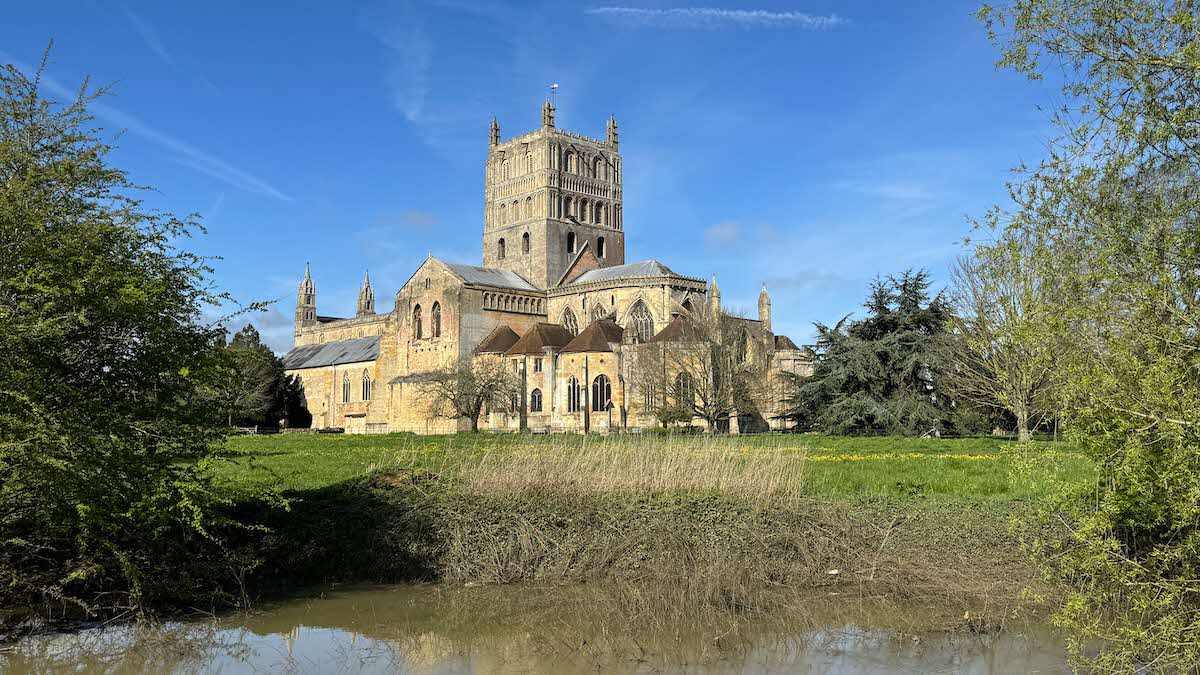
This summer my family and I embarked on a tour that took in a trio of the UK’s most treasured National Landscapes. We started off in Worcestershire on the northern edge of the Cotswolds before venturing west into the Wye Valley, which straddles both England and Wales. Our clockwise loop then took us to our final destination – Malvern Hills Club Campsite, which lies just outside the boundary of the eponymous protected region. At every turn we were met with stunning vistas and fascinating heritage.
Our starting point was the highly rated Broadway Club Campsite, which sits on the fringes of Broadway village. A considerable bonus is the fact that the Gloucestershire Warwickshire Steam Railway passes right alongside the site, and campers have a ringside seat to enjoy the spectacle. If you’d like to experience a train journey yourself, trips run from the station in Broadway all the way to Cheltenham Racecourse, offering a nostalgic, relaxing way to enjoy the magnificent landscape.
The Cotswolds are renowned for undulating hills, traditional market towns and charming villages built from distinctive, honey-coloured stone. A number of historic churches and stately homes add to the rich tapestry of this beautiful region. Broadway itself – often referred to as ‘the Jewel of the Cotswolds’ – is an easy walk from the site, and features a wide high street lined with horse chestnut trees, period houses and an eclectic mix of shops and eateries.
Located on a hill 35 minutes’ walk out of the village, Broadway Tower provides sweeping views across the area, and is a highlight of any tour. This iconic landmark was conceived by the renowned 18th-century landscape designer Lancelot ‘Capability’ Brown as a folly for the 6th Earl of Coventry. Two circular walks take in the adjacent deer park – why not stop for a picnic or treat yourself at the café?
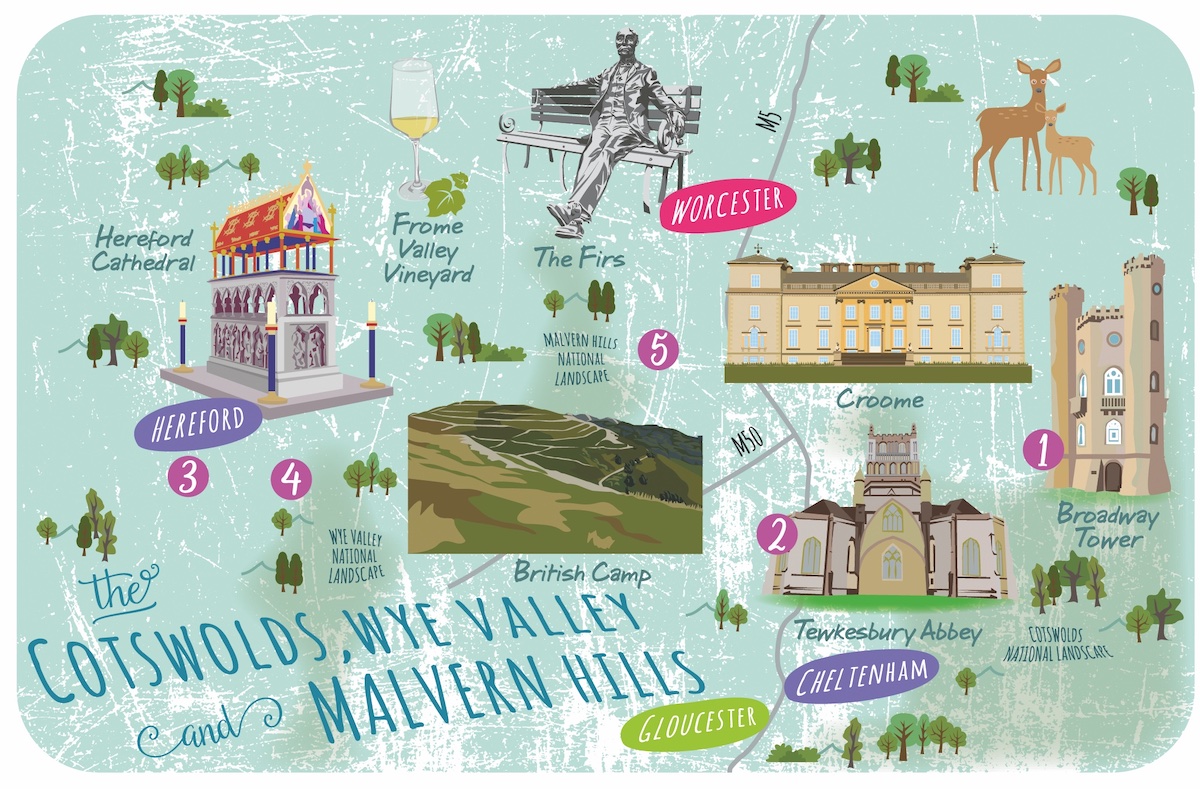
Heading westwards, our next stopover was the Tewkesbury Abbey Club Campsite. Sitting within a park on the edge of town, it is just a short stroll from the majestic Tewkesbury Abbey itself. Founded by the Normans and boasting a colourful history, Tewkesbury Abbey has been a site of worship for more than 900 years.
It played a significant role in the War of the Roses, when defeated Lancastrians sought sanctuary there during the Battle of Tewkesbury in 1471. During the Dissolution of the Monasteries in the 16th century, the Abbey was saved when the townspeople purchased it from King Henry VIII; the belltower – since demolished – even served as a jail for a while. Today, visitors can enjoy a tour of the building, enjoy a piece of cake and a sandwich in the Touching Souls Tea Room or browse in the lovely gift shop.
The town of Tewkesbury is renowned for its well-preserved medieval streets and timber-framed buildings, particularly along Church Street and High Street. Indeed, the town’s modern layout still reflects its medieval plan. Alleys and ‘courts’ weaving between the buildings were built to provide access to cottages and workshops. Each passageway has a unique tale to tell.
Located 10 miles north of Tewkesbury is the National Trust property of Croome. Originally the home of the Coventry family, the main house sits within a landscape designed by the aforementioned ‘Capability’ Brown. Croome was, in fact, Brown’s first commission, often described as his ‘first and favourite child’.
During the Second World War, the Croome estate’s significance shifted as it became the site of RAF Defford. Primarily used for the testing and development of airborne radar systems, the site played a crucial role in improving wartime technology. Croome is now home to the RAF Defford Museum, which provides an insight into the activities that took place here and how the airfield shaped the landscape.
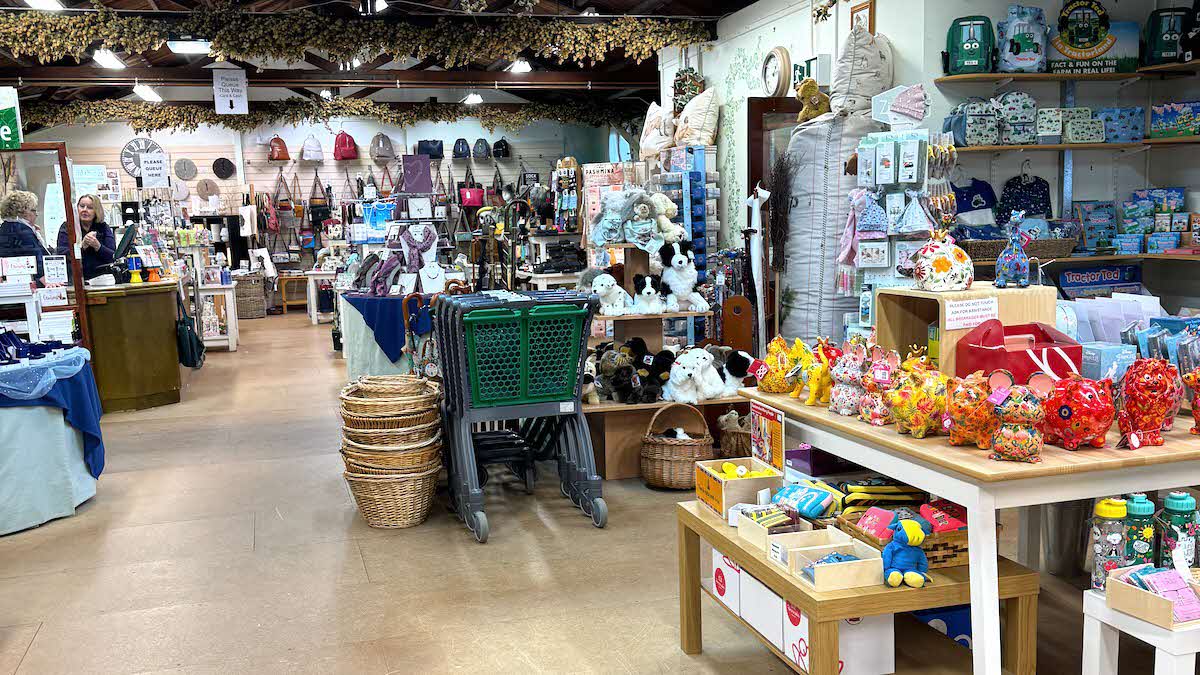 The Hop Pocket Shopping Village
The Hop Pocket Shopping Village
From Tewkesbury we headed further west into Herefordshire, where you could choose between the small, tranquil Grafton CL, which lies just three miles outside Hereford, or the larger Lucksall Affiliated Site (AS), which is situated less than six miles away from the city and is equipped with amenities such as a restaurant, laundry room and play areas. Lucksall sits within the aforementioned Wye Valley National Landscape – the river actually bordering the campsite on one side, offering opportunities for canoeing or paddleboarding.
Hereford is a city steeped in history. Hereford Cathedral, which dates back to 1079, is famously home to the Hereford Mappa Mundi – a fascinating map of the world dating from around 1300. But it has another treasure – it is home to the largest surviving ‘chained library’ in the world. An effective theft deterrent, the practice of chaining books was often found in universities and cathedrals in the Middle Ages – the system allowing readers to remove works from the shelves but not detach them from the bookcases. To find out more about Hereford’s history, reserve a spot on one of the daily guided walks run by the Hereford Guild of Guides.
Heading eastwards from Hereford, if you enjoy a spot of retail therapy, be sure to explore The Hop Pocket Shopping Village, across the border in Bishop’s Frome, Worcestershire. It is home to independent boutiques – selling toys, clothes, shoes, food, furniture and gifts – within old agricultural buildings. Meanwhile the café offers everything from tea and cake, to more substantial meals like cottage pie.
If you’re not driving, it might be time for a glass of wine. At nearby Frome Valley Vineyard you can join a tour of the picturesque estate and learn about the intricacies of English wine production. At the end you’ll be offered tastings of exquisite wines and spirits, and there’s the opportunity to purchase something in the shop to take back to the ’van.
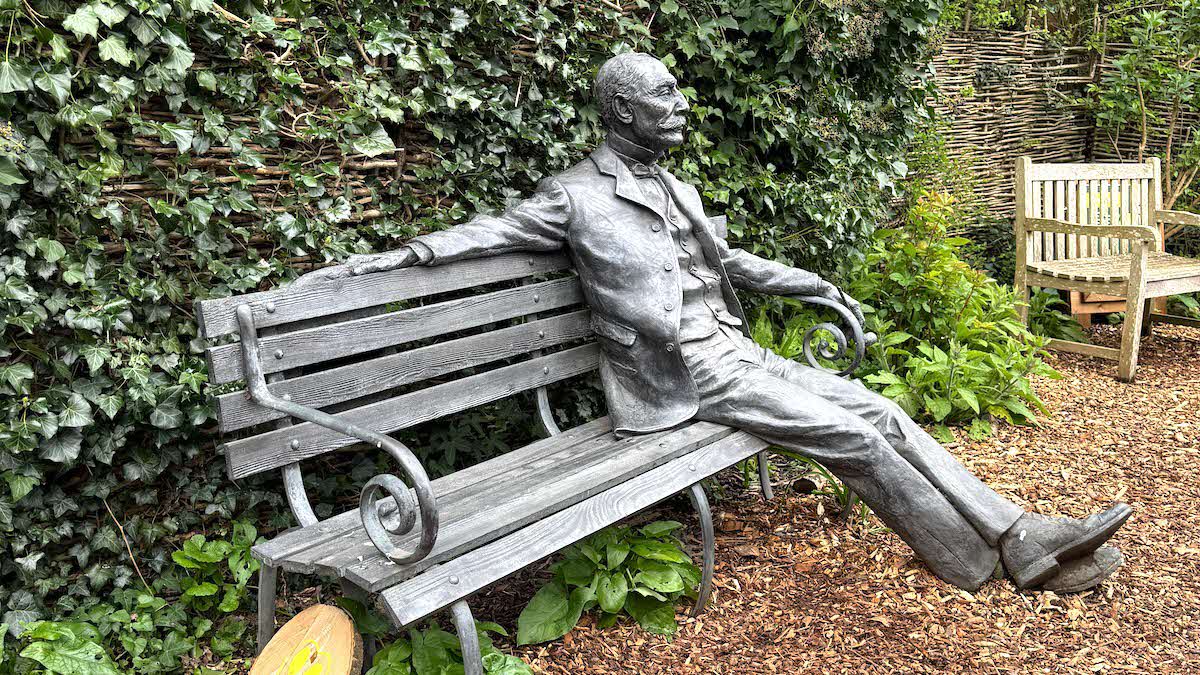 Edward Elgar statue at The Firs
Edward Elgar statue at The Firs
From here, our journey leads us further east into the Malvern Hills and on to Malvern Hills Club Campsite, a spacious, friendly site.
The rugged hills themselves rise abruptly from the surrounding countryside and are a popular destination for walking, hiking and other outdoor activities.
Among numerous sites of interest is British Camp, an ancient hill fort that sits atop Herefordshire Beacon. The fort features impressive earthworks dating back to the Iron Age and enjoys panoramic views over the area.
If you are walking in the vicinity of North Hill, which boasts the second highest peak in the region, be sure to visit St Ann’s Well – the historic spring is said to have healing powers. The well is housed within a charming building that includes a café – perfect for a pitstop if your legs are weary.
Further to the north I highly recommend a visit to the National Trust property, Brockhampton. Nestled within a 1,700-acre farmed estate is the late-14th century timber-framed Lower Brockhampton Manor House. Encircled by a moat and accessed through a lopsided gatehouse, the beautifully restored interior features rooms representing specific eras in the house’s history, up to the 1950s. Outside, you can enjoy a variety of walks through the estate’s woodland and parkland, as well as the National Trust’s largest managed orchard.
Classical music enthusiasts, meanwhile, should pay a visit to The Firs, the birthplace of Sir Edward Elgar, composer of the Enigma Variations and the Pomp and Circumstance Marches.
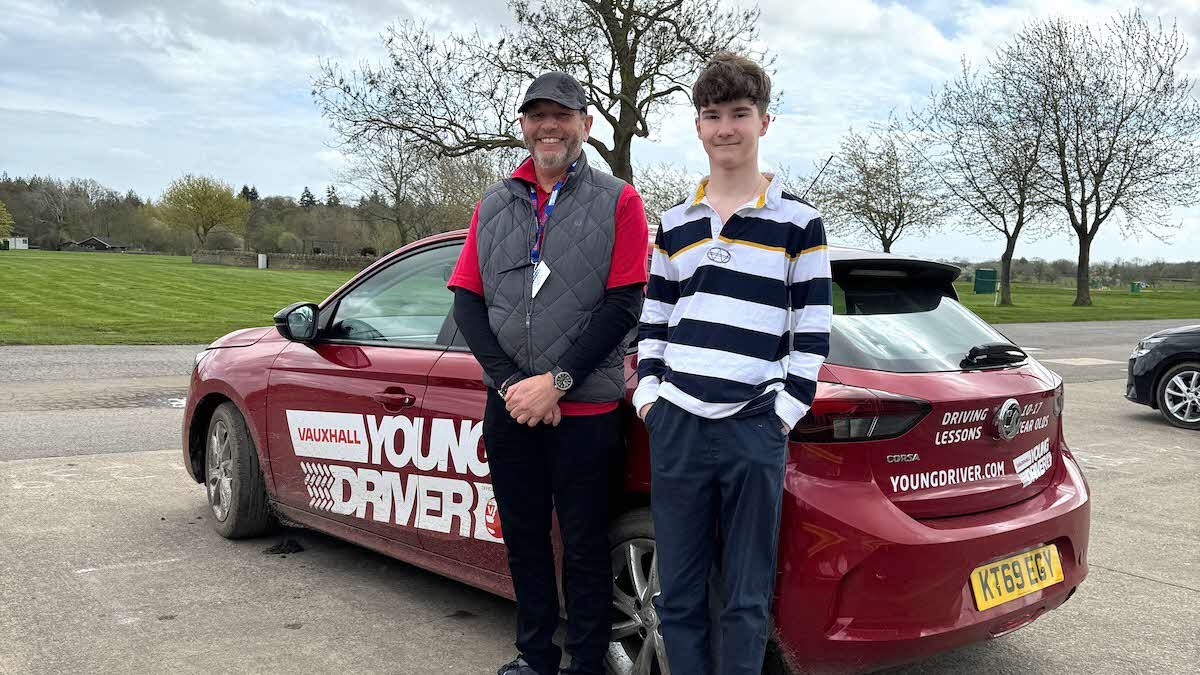 Daniel and his instructor at Young Driver training
Daniel and his instructor at Young Driver training
Towards the end of our trip, we visited the Morgan Experience Centre at the home of the Morgan Motor Company, which has been crafting quintessentially British vehicles in Malvern for over 110 years. The centre offers tours that explore the manufacturing process, and one-hour guided drives are also available, enabling you to experience one of these iconic cars first-hand. If a slightly slower pace appeals, the café offers delicious coffee and cakes. Our son, Daniel, enjoyed wandering the showroom, manifesting the Morgan he says he will purchase one day!
Indeed, after this visit he ,was eager to get behind the wheel of a car for the first time. As an end-of-tour treat, we enrolled him on a Young Driver Training Course at the Three Counties Showground. This course, for which Club members can claim a 20% discount (camc.com/greatsavingsguide), gives teenagers the chance to drive a real car before they’re legally allowed to take to the road. Under the expert guidance of his instructor, Daniel learned the basics – starting, steering, manoeuvring, reversing and parking – in a safe, controlled environment complete with two-way traffic and road signs. It was an excellent introduction to driving – before too long he’ll be able to drive us around on tour!